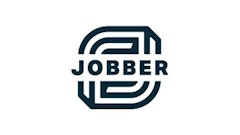
Anyone who works in the landscaping industry knows how intensely competitive it is. In my experience, as the business scaled and our portfolio grew, we were able to expand our company’s roster of residential jobs and transition into taking on more commercial clients. At the peak of our business, we were managing more than 100 jobsites with hundreds of pieces of equipment and nearly 400 employees throughout the year.
The ability to accomplish this came down to attention to detail, consistent quality, networking, a little bit of luck and a whole lot of hard work.
Leverage your past experience.
Having an eye for attention to detail was one aspect that led our company to our first commercial landscape project. The job was at a wedding venue and restaurant, which blended our work of high-end residential on a commercial-based project. Once we had completed this, it enabled us to apply for awards, which helped to bolster our reputation. Additionally, we also leveraged my landscape architecture degree as we sought out more commercial-based contracts.
As we utilized my degree and our awards, we also ensured that our pricing was competitive to be successful in our bids to local contractors who were taking on these large-scale projects.
Knowing the differences between how residential and commercial jobs operate is key
We learned quickly that commercial jobs run very differently than residential ones. When looking to make the transition from residential landscaping to commercial landscaping, it is important to prepare yourself for how the projects operate.
For instance, commercial projects offer a much high volume of work but with lower margins, unlike smaller jobs which have higher margins. The high volume of work you receive with commercial jobs offers you more purchasing power, but you must ensure you’re not cash-strapped. Make sure you’re prepared to not be paid immediately when the job is done. The cost of doing business might mean waiting until the project is finished to receive payment and then having a 10 percent holdback for 90 days. It is important to manage this balance to be operational and profitable.
Once we had a few more commercial projects under our belt, we were able to obtain bonding. It was important that we built our business up, and we needed to be in a strong financial position to obtain this. Having several projects under your belt, especially if they are award-winning, it starts to be easier to win the bids on the jobs you want. In particular, high-end projects.
Tap into your network
As we continued to bid on jobs and get our name out there, we learned it’s important to continually make our presence known. Applying for awards is a great way to leverage your name and establish your credibility. We got connected with landscaping associations, chamber of commerce and homeowner association chapters around our community. In doing this, you will allow businesses to find you and offers additional word-of-mouth referrals.
With growth comes growing pains
In landscaping, employee retention is a known and consistent challenge. We were very lucky to keep our retention rate high as we kept close to our employees and respected them. However, as happens, when scaling your business, priorities and personal involvement will change. You won’t be able to be on the job site and have team members buy into the mission as your direct involvement with them will change. As these shifts are made, make sure you consider putting efforts into the company culture. The larger a company gets, the more critical it is to have a culture which values employees.
Additional steps to consider
One piece of advice we received, which we learned to be true as we became a major player in commercial projects was to get creative with our approach on the execution of these projects. For example, you should not base your bidding on the expectation that the way you accomplished one thing efficiently on a project would be the same for another. Ask yourself “How can I keep the customer happy, while keeping up with the type of volume I am bringing in?”
We also learned the margin for error is immensely smaller on commercial projects. We became increasingly calculated in our approach. Our equipment became significantly more specialized for these jobs, and we began to share pieces of equipment with projects which were working side by side. We also utilized leaner teams with this specialized equipment to get in and out of the jobs more efficiently. In many cases, it wouldn’t be one dedicated crew completing a job but we would have multiple crews working in tandem to get the jobs done.
Throughout our journey from residential to commercial landscaping jobs, we not only were able to grow our business to have over 400 employees but we became knowledge leaders and experts in crafting vibrant spaces in the communities we lived in. We embraced all the challenges which came our way, always stayed curious about any new job we were approached with and leveraged each and every opportunity to achieve long-term success.


























